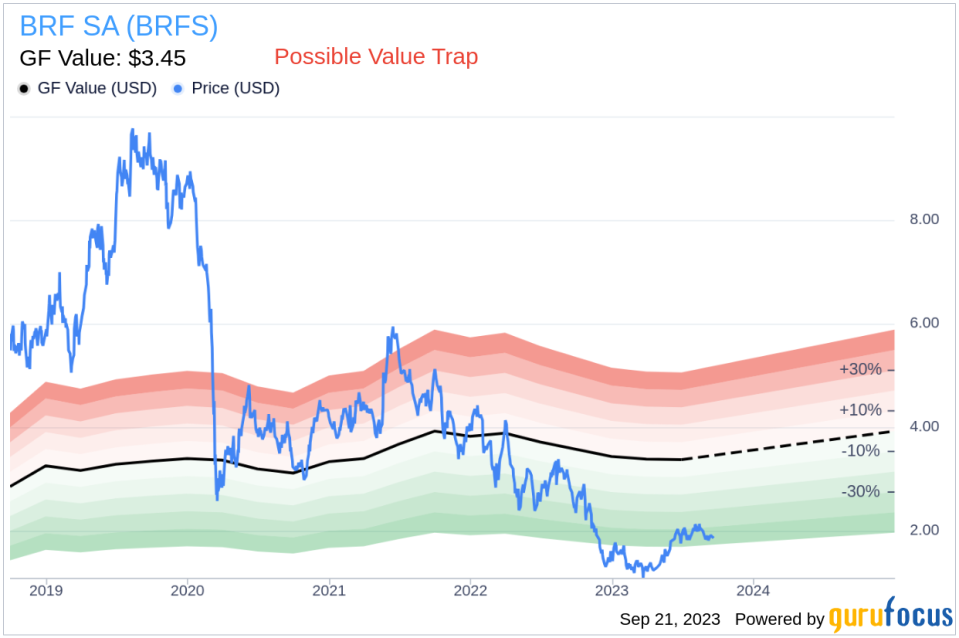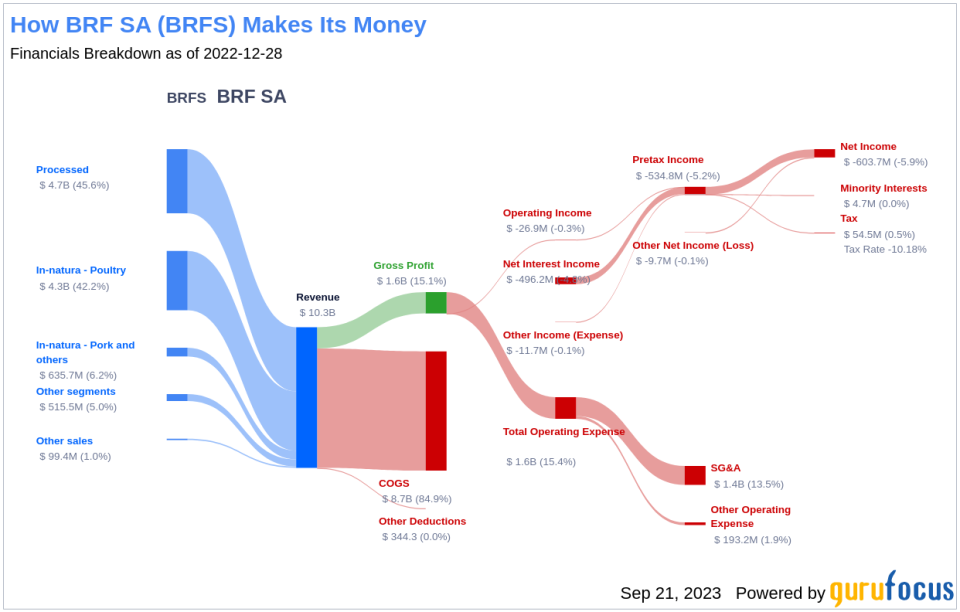Is BRF SA (BRFS) Too Good to Be True? A Comprehensive Analysis of a Potential Value Trap
Value-focused investors are always on the hunt for stocks that are priced below their intrinsic value. One such stock that merits attention is BRF SA (NYSE:BRFS). The stock, which is currently priced at 1.84, recorded a loss of 6.12% in a day and a 3-month decrease of 8.47%. The stock's fair valuation is $3.45, as indicated by its GF Value.
Understanding GF Value
The GF Value represents the current intrinsic value of a stock derived from our exclusive method. The GF Value Line on our summary page gives an overview of the fair value that the stock should be traded at. It is calculated based on three factors:
1. Historical multiples (PE Ratio, PS Ratio, PB Ratio and Price-to-Free-Cash-Flow) that the stock has traded at.
2. GuruFocus adjustment factor based on the company's past returns and growth.
3. Future estimates of the business performance.
The GF Value Line is the fair value that the stock should be traded at. The stock price will most likely fluctuate around the GF Value Line. If the stock price is significantly above the GF Value Line, it is overvalued and its future return is likely to be poor. On the other hand, if it is significantly below the GF Value Line, its future return will likely be higher.
BRF SA's Risk Factors
However, investors need to consider a more in-depth analysis before making an investment decision. Despite its seemingly attractive valuation, certain risk factors associated with BRF SA should not be ignored. These risks are primarily reflected through its low Altman Z-score of 1.15. These indicators suggest that BRF SA, despite its apparent undervaluation, might be a potential value trap. This complexity underlines the importance of thorough due diligence in investment decision-making.
Deciphering the Altman Z-Score
Before delving into the details, let's understand what the Altman Z-score entails. Invented by New York University Professor Edward I. Altman in 1968, the Z-Score is a financial model that predicts the probability of a company entering bankruptcy within a two-year time frame. The Altman Z-Score combines five different financial ratios, each weighted to create a final score. A score below 1.8 suggests a high likelihood of financial distress, while a score above 3 indicates a low risk.
Company Snapshot
In this session, we provide a succinct but thorough snapshot of the company's business operations and history, based on the 'Company Data'. We establish a comparison between the stock price and the GF Value, which is an estimation of fair value. This approach will efficiently pave the way for a more profound exploration of the company's value, ingeniously integrating financial assessment with essential company details.
Understanding BRF SA's Low Altman Z-Score
A dissection of BRF SA's Altman Z-score reveals BRF SA's financial health may be weak, suggesting possible financial distress. The EBIT to Total Assets ratio serves as a crucial barometer of a company's operational effectiveness, correlating earnings before interest and taxes (EBIT) to total assets. An analysis of BRF SA's EBIT to Total Assets ratio from historical data (2021: 0.06; 2022: 0.02; 2023: 0.00) indicates a descending trend. This reduction suggests that BRF SA might not be utilizing its assets to their full potential to generate operational profits, which could be negatively affecting the company's overall Z-score.
Conclusion
In conclusion, despite the seemingly attractive valuation of BRF SA (NYSE:BRFS), the company's low Altman Z-score and declining EBIT to Total Assets ratio suggest potential financial distress, making it a possible value trap. Therefore, investors should exercise thorough due diligence before making an investment decision.
GuruFocus Premium members can find stocks with high Altman Z-Score using the following Screener: Walter Schloss Screen .
This article first appeared on GuruFocus.


